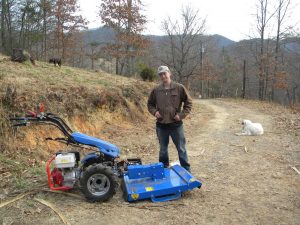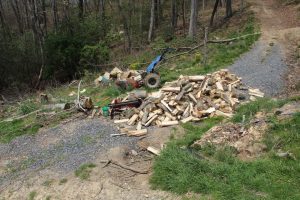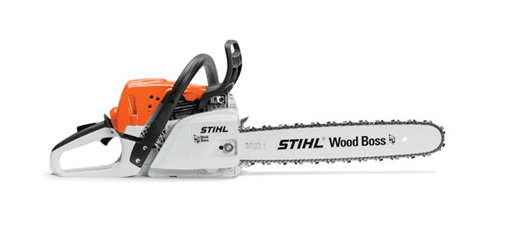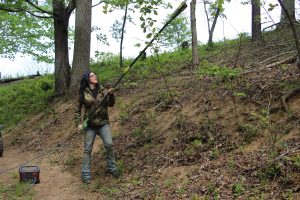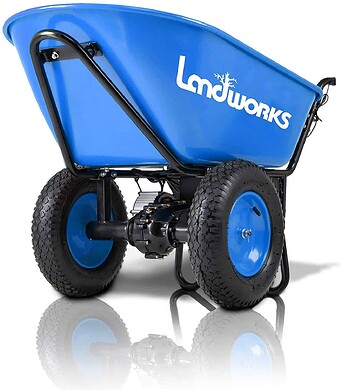When you have a smaller property, it is essential to have suitable equipment for your needs. That may seem like a no-brainer.
Most Common Purchase Mistakes
- Not shopping around for the best price.
- Buying equipment that is too large or complicated. This adds to the cost and sometimes causes more trouble.
- Not checking for used equipment. Sometimes you can find excellent deals on used equipment at dealers or through private individuals.
- Buying too many single-purpose machines or a lot of tools that you are not going to need very often. Sometimes renting a piece of equipment occasionally is a better option.
Lawn Tractors
Pros- Available in many sizes and price ranges.
- Good availability of implements you can add as you need them.
- Cannot be used on steep to very steep slopes. Lots of storage space is needed for tractor and implements.
- Higher up front costs
Walk-Behind Tractors
- BCS
- Grillo
Grillo is another major manufacturer of walk-behind tractors. Many of the implements and attachments are similar between BCS and Grillo. In the USA, BCS is more common.
The BCS is very impressive with what you can do. My husband created a lot of paths and roads around our property using the tiller and scrape blade. If we had paid a professional to come in with a larger machine, it would have cost us thousands of dollars and been a lot harder on the land. You always have to think about disturbance and erosion when you have a property like ours.
Log Splitter
Some people may think that a log splitter is huge. The truth is that you can get small electric log splitters that are very small and can be stored upright to make good use of your vertical space. They also cost a lot less. Gasoline-powered log splitter are typically much larger and cost a lot more as well. The advantage is that you can get them that are more powerful and you can use them where electricity is not available.
After years of splitting all the firewood for two homes, we bought a Boss 7 ton electric log splitter for around $500 plus $120 of accessories. I have not been able to help my husband split wood due to my pregnancy, and now it is time to get started on wood for next year. With a child on the way, we are trying to do what we can to maximize what work we can get done without destroying our backs and taking a lot of time. This splitter is pretty amazing. It will take on some big pieces, and you can put in a piece of wood up to 20.5 inches long. No more spending tons of time outside in the wintertime splitting wood. Now we have to split a little kindling maybe but are hopeful that the four-way splitter head will eliminate even a lot of that.
Remember that you can use an extension cord or a larger power station if you want to use an electric splitter where no regular power is close by. The Jackery 1500 or 2000 would power it for short periods.
Stihl Yard Boss or KombiSystem
Stihl makes its own version of the Mantis Tiller. You can get a variety of attachments including cultivators and edgers. The KombiSystem is interesting because it offers three different options for the homeowner or small farmer. You can choose between an electric KombiSystem or a gasoline-powered home or a professional version.I like that the KombiSystem allows you to buy one powerhead that can be used for a huge array of attachments from a simple weedeater head to a pole saw, mowing scythe, cultivator, hedge trimmer, and more. If you need to get a lot of different tasks done and want to keep the engines you maintain to a minimum, then this is the system to consider.
Mantis
This company has been around for a long time. I remember seeing their infomercials back in the late 80s and throughout the 90s. The Mantis tiller is great for those that have small to mid-sized gardens and beds. Even those with raised beds will appreciate the size and time that the Mantis can save. You can get a cultivator attachment and a little plow for not too much extra. All Mantis tillers are still made in the USA, a rare thing nowadays.
Buy quality machines the first time.
Over the years, we have learned a thing or two about buying less expensive machines. When you are in your 20s and building a house plus clearing a property $500 at a time, it is tempting to buy the less expensive model. After a few times of doing this, we realized that not only were machines and power tools a safety hazard when made cheaply; they also made the job take longer due to poor performance and constant minor adjustments and repairs.This does not mean you have to buy the most expensive either. Just make sure to buy a reputable brand that is at least mid-priced, and you will be fine. Products with a 1-2 year warranty are nice for the peace of mind they offer.
Battery Powered Machines lack the power and force that gasoline or diesel machines offer. Electric is fine for those that have a small or mid-sized yard in town. If you have a power center, then you can also utilize small electric machines and tools to take on tasks around your place for a lower cost than buying the comparable gas version.
Useful Single Purpose Machines
Chainsaw
Stihl and Husqvarna are the brands I recommend. Stihl chainsaws are only sold at authorized retailers. Husqvarna is sold at some box stores but also at power tool retailers. I feel that it is crucial that people understand the difference between homeowner grade and professional-grade chainsaws. Both Stihl and Husqvarna make models that are designed for either homeowner or professional use. If you plan on using your chainsaw a lot, then I recommend getting one of the smaller professional-grade saws. You will not regret it.
Husqvarna is often sold at Lowes Home Improvement. These saws are only homeowner grade, so while the price may seem great, you get what you pay for. Professional grade saws are made with higher quality components that will hold up to heavy use over the years, which means less downtime for repairs and not having to replace your chainsaw as often.
Do not make the mistake of getting a chainsaw that is larger than what you need. The more powerful the saw and the longer the cutting bar, the heavier it will be. Throughout a project, that extra weight will wear you out a lot faster. The Stihl 260 or 280 is as large as most people ever need, and you can change out the bar size if needed. They typically come with a 16" cutting bar, but you can also choose an 18" or 20".
If you have a lot of trees to manage, you may want a second smaller saw for limbing if your budget allows for it.
Concrete Mixer
My husband and I built our own house in an area where it was practically impossible to get a concrete truck. It would have been cost-prohibitive to get a truck up there multiple times as well. We bought the raw materials and mixed all the concrete we needed. Concrete mixers will save you time and money when you want to build retaining walls or create pathways around your property. You can make stepping stones with molds for a fraction of the most, and you can create some beautiful designs.Back when we were roughing it while building our house, I even used the concrete mixer to wash laundry!
Concrete mixers come in different sizes, so read carefully before buying. Overloading a concrete mixer will result in it not mixing as fast and will eventually damage the machine. The main mixing tub can be made of heavy-duty plastic or metal. I recommend getting one that is all metal for longer durability.
Steep Slope Mowers
Now you can get robotic mowers to go places that a typical mower will not. Of course, there are also ride-along versions. Steep slope mowers are not cheap, but if you live somewhere with rough and steep terrain and want to keep the growth under control, it might be the only way to reasonably do it.Livestock can do the work of machines to some degree. Steep slopes are great for grazing sheep and goats. Cattle can handle a steep slope, too but not as steep as goats and sheep. It may be cheaper for you to fence some land than to try to buy a machine and maintain it. Sheep and goats are at least worth something too. Instead of mowing or weedeating, you can have meat for the table and some excess livestock to sell for cash flow.
Push mower
There are some places that a push mower works better than a riding mower. Our yard and the yard at my Dad’s house are good examples. The space is too uneven. A push mower and weedeater work a lot better and get into the smaller spaces.Riding mowers are not safe to use on steep slopes. You have to be careful when mowing even a moderate slope because you can more easily tip over. You would be shocked to know how many people are injured or killed trying to mow a ditch every year.
Sun Joe Electric Pole Saw
This was an excellent $70 investment. When we combined this pole saw with our Jackery 1000 power center, we can drive around and trim limbs on all areas of the road. We don’t have to bother with a heavier gasoline pole saw. This one is plenty powerful, as you can see in the video and pics. The Mule will also get into areas that our truck will not. In a grid-down emergency, a saw like this or the ability to charge batteries on an electric chainsaw would allow you to cut up some firewood without resorting to an archaic misery whip or crosscut saw.
Start small when learning how to use a new machine. It is a mistake to try to do too much or something that is too complicated when you are just getting a feel for a new piece of equipment.
Transportation and General Homestead Chores
Kawasaki Mule
This is what we use more than 90% of the time to get around our property and perform work. It will get into places where our Tacoma won’t fit. The narrower mountain roads and the fact that going to visit my Dad is ¼ mile of unpaved driveway means the Mule makes a lot of sense. It will hold up to 4 people if in short bed mode and has a roll cage and seat belts for safety. Sure it only goes 25 mph max, but that is faster than you should go on our roads anyway. If you want something to play with or just run around in, you can get a speedier UTV, but you cannot beat a Mule for real work and getting around a farm.
The dump bed makes it a lot easier to move sand, gravel, mulch, and more.
ATV
While four-wheelers are fun, They are not as useful for homestead chores as a UTV. If you have a big place and need something for transportation or pulling a small wagon, they might be ok, but in general, for the money, they are not my favorite. Four-wheelers are also not enclosed at all and lack safety features. Farm accidents are common enough without upping the odds of injury even more.Wagons
Wagons and carts are often pulled by a lawn tractor, ATV, or UTV. The load capacity varies by the cart. The better wagons and carts feature a dump bed. A lot of wagons are made of heavy-duty plastic. While metal may seem better, you need to consider how much heavier it is. Small machines including ATVs are only rated to tow so much weight. The heavy-duty plastics that are used for carts are impressive and lightweight so you can have more towing power for your actual load.Here are a few examples of wagons and carts for around the homestead.
Power Wheelbarrows
There is such a thing as a powered wheelbarrow. These help you get loads moved without pushing and pulling on your part. They are not very practical if you have an ATV, UTV, or another method for towing a cart or wagon.
Conclusion
Small equipment makes maintaining a homestead possible when only a few people are available to perform physical labor. Its important to research equipment options and shop around for good deals. It can be hard to know what exactly you need when you start working on a property. It may be helpful to set aside some money in an "equipment and tools fund" so you can more easily meet your equipment needs.
Do you have equipment suggestions to share?
This is a companion discussion topic for the original entry at https://peakprosperity.com/making-smart-power-equipment-choices-for-the-homestead/
